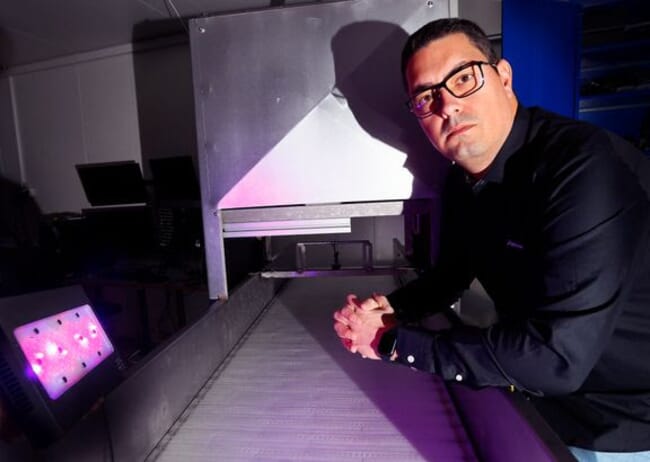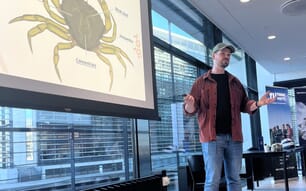
© Nofima
The need for non-invasive methods of welfare-monitoring in aquaculture has long been clear and, to this end, researchers at Nofima – a Norwegian research institute – have developed a technique to measure early signs of animal stress using biofluorescence.
The fish and invertebrates that exhibit biofluorescence emit lower energy light when they are exposed to higher-energy blue light. This strong fluorescence is not visible to the naked eye, but it can be measured with hyperspectral imaging.
“Fish may exhibit welfare traits in ways that are invisible to the human eye, and one of our objectives is to explore new technologies that can reveal this to us in real-time," said Evan Durland, leader of the research project, in a press release.
Seeking to investigate the potential of hyperspectral imaging of biofluorescence as a welfare indicator, technology scientists Samuel Ortega and Thomas Juhasz experimented with lumpfish, red king crab, and green sea urchins. Their research found that both lumpfish and red king crabs produced stronger fluorescent emissions after exposure to stressors. Additionally, they found that sea urchins with broken spines or lesions glow brighter in the areas where they are affected.
These findings have potentially significant implications for the way that animal health and welfare is monitored within the aquaculture sector, and they already have ideas of how the technology can be improved.
“We want to see if we can integrate artificial intelligence into this method. The AI can analyse the biofluorescence data acquired through hyperspectral imaging, and alert us if it detects any fluorescence changes that may indicate stress in the animals. We believe that this could contribute significantly to the future of welfare measurement during aquaculture operations," said Ortega.




